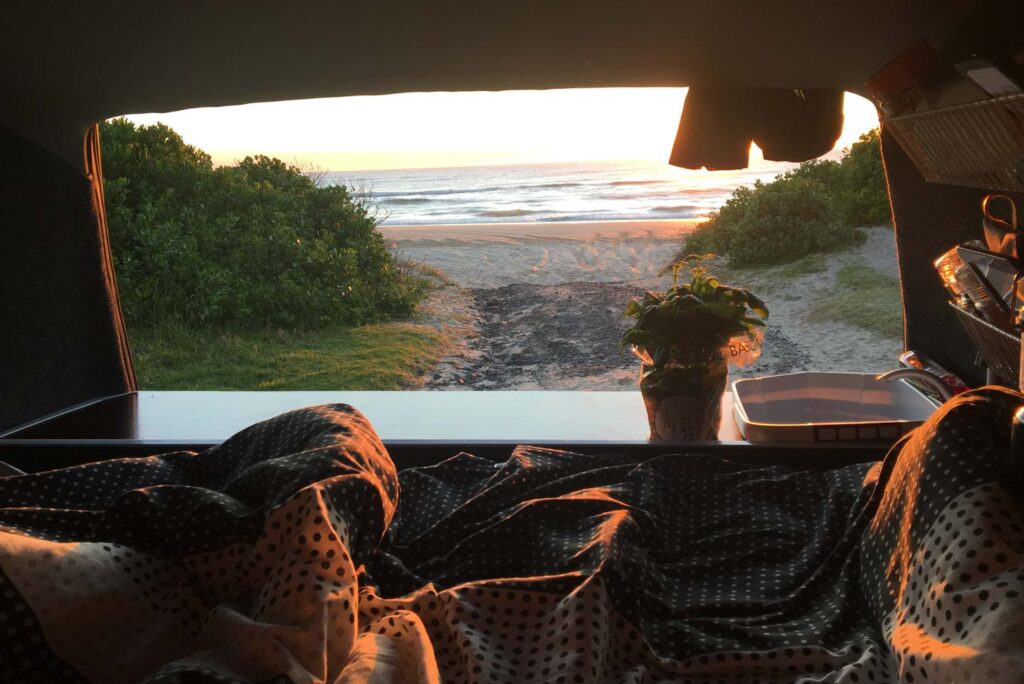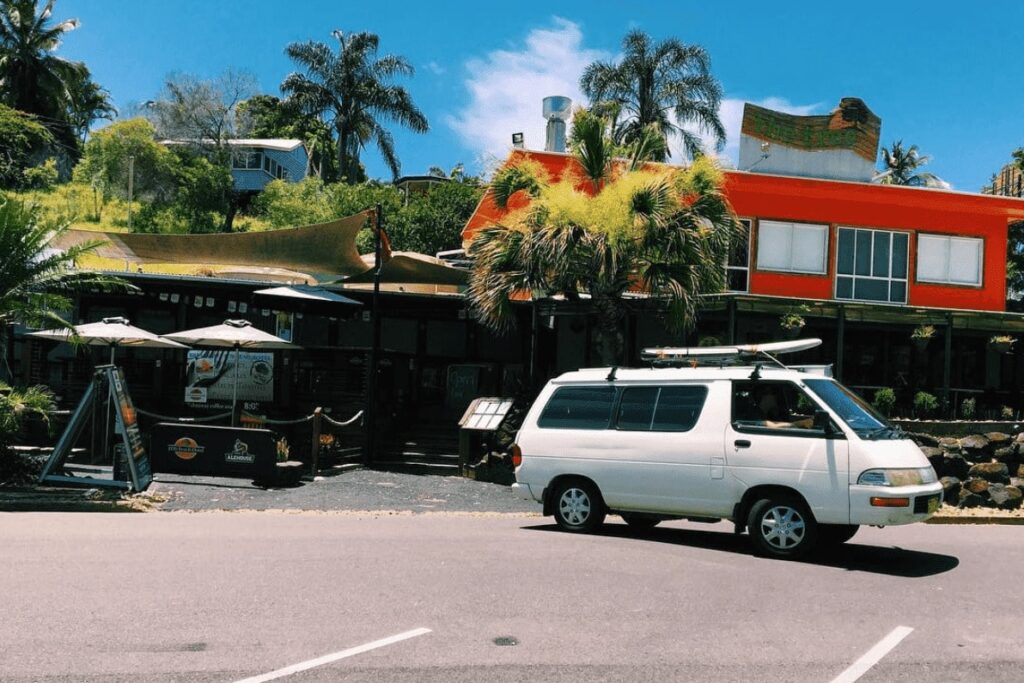From the burning hot sun of Queensland to the chillier temperatures of Tasmania, planning your next camping trip in Australia can be made easier by understanding what the perfect camping weather looks like. While each camper has different preferences for their outdoor adventures, it’s important to have a good idea of what could make or break your campging experience, from climate to timing. With this in mind, we’ve put together this short guide that explores all you need to know about the perfect camping weather when making plans for a memorable and enjoyable adventure across Australia.
I’ve been camping in Australia for years and even lived in a campervan fultime for eight months at one point. This means I’ve seen just about every type of weather you can imagine including heavy rains, floods, storms and extreme heat in the outback. If you’re a bit nervous about camping in Australia when the weather isn’t quite perfect, this guide will help you out.
This post may contain affiliate links, which means we’ll receive a commission if you purchase through our links, at no extra cost to you. This helps us keep My Australia Trip free and provide high-quality content for you. Please read the full disclaimer for more information.

What is the perfect temperature for camping in Australia
Camping is one of the most exciting ways to get to know Australia. It offers a chance to escape the busy city life and become one with nature. However, when planning a camping trip, one factor that often comes up is the ideal temperature to camp.
The truth is, there is no one-size-fits-all answer as the ideal camping temperature varies for every individual based on personal preferences. Nonetheless, it is generally agreed that camping at temperatures between 15°C and 25°C is comfortable for most people. 21°C is sometimes quoted as the perfect camping weather.
Cool temperatures mean fewer insects and less humidity, while the warmer temperatures can be perfect for a dip in the ocean.
Keep in mind that temperatures are measured in the shade so that even if your weather forecast says 20°C, it will actually be a lot hotter in the sun.
Tips on how to enjoy your camping trip regardless of the weather
Camping is an amazing way to escape the hustle and bustle of everyday life and connect with nature. However, weather conditions can sometimes make it difficult to fully enjoy the experience. But fear not, there are ways to make the best out of any weather.
First and foremost, always check the forecast before heading out and pack accordingly. If it is going to be rainy, make sure you bring waterproof gear and extra tarps. If it’s going to be hot, pack plenty of water and stay in the shade during the hottest parts of the day.
Second, plan indoor activities such as card games or board games so you can still have fun regardless of outdoor conditions. Lastly, embrace the weather and all it has to offer. Don’t let a little bit of rain or wind ruin your trip – instead, use it as an opportunity to create memories and enjoy the beauty of nature in a different way.
Even if you normally don’t like camping, you’re in charge of your experiences and a positive mindset can make the world of a difference when conditions aren’t ideal.
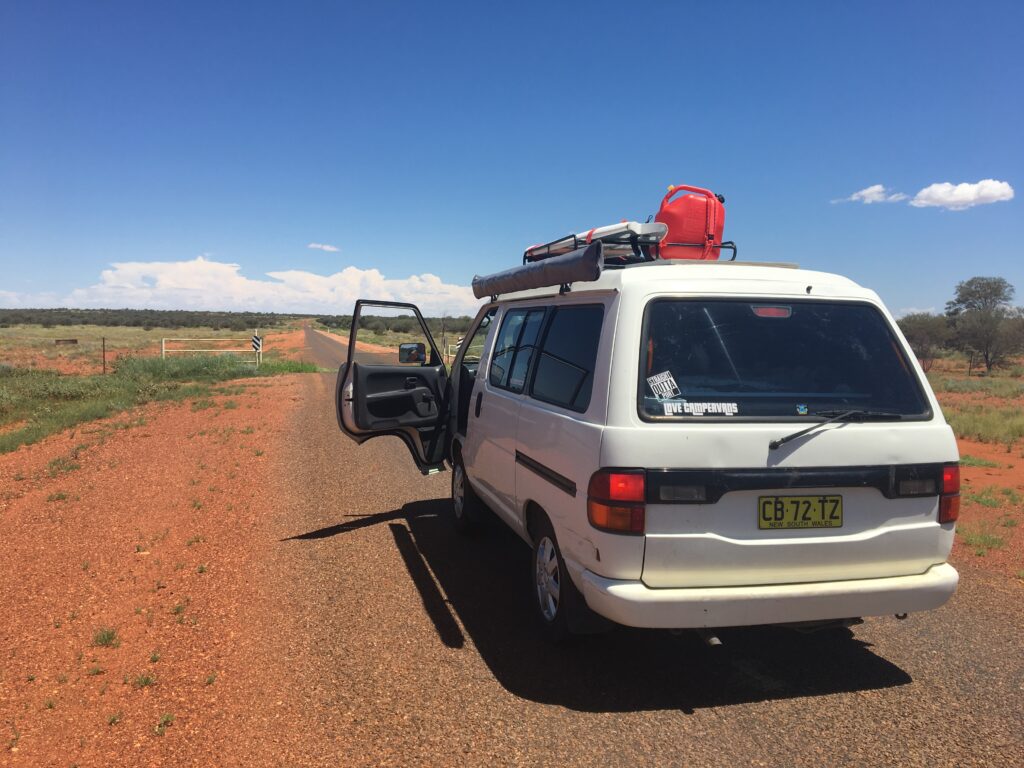
Common mistakes people make when packing for an Australian camping trip
Are you planning a camping trip in Australia? It’s a fantastic way to explore the great outdoors and see some of the stunning landscapes this country has to offer. But before you set off, it’s essential to pack everything you need and avoid some common mistakes that many people make.
One mistake is overpacking and bringing too much gear, making your backpack heavy and difficult to carry. Another mistake is not bringing enough water or the right type of clothing for the weather conditions. It’s also important to remember that Australian wildlife can be dangerous, so forgetting to bring insect repellent or a first aid kit is a mistake that could have serious consequences. By avoiding these packing mistakes, you can ensure that your camping trip in Australia is a memorable and enjoyable experience.
In my experience some extra tarps and plenty of duct tape will make a huge difference if you want to be prepared for any weather.

Factors to consider when it comes to the perfect camping weather
When it comes to finding the perfect weather for camping, there are a few key factors to consider. Firstly, the temperature should be mild, neither too hot nor too cold. This will ensure you’re staying comfortabel and will have plenty of energy for fun activities.
Secondly, the weather should be dry and relatively wind-free, as this will make it easier to set up camp and enjoy your surroundings. Thirdly, it’s important to consider the time of year, as different seasons can bring their own unique challenges. Whether you’re planning a hiking trip or simply setting up camp for the night, paying attention to these factors will help ensure that your camping experience is a success.
Temperature
Australia’s vast size and diverse climate mean that temperatures can vary significantly depending on the region and time of year. During the hot Australian summers, it’s crucial to pack lightweight, breathable clothing, wide-brimmed hats, and sunscreen to protect yourself from the intense heat. Staying hydrated is also essential, so be sure to bring plenty of water and consider camping near water sources for refreshing dips.
On the other hand, winter temperatures can drop significantly, especially in southern areas and higher altitudes. To stay cozy during cold nights, pack warm layers, insulated sleeping bags, and thermal gear. It’s always a good idea to check the weather forecast and be prepared for sudden temperature changes or extreme weather conditions.
By considering temperature variations, you can plan your camping activities accordingly and ensure a comfortable and enjoyable experience amidst Australia’s breathtaking natural landscapes.

Rain and snow
Australia’s diverse climate means that rain showers can occur at any time, even in regions where you least expect them. When rain pours, it’s crucial to be prepared with waterproof gear, including tents, tarps, and clothing. Adequate shelter and proper drainage at your campsite are essential to prevent water from pooling or flooding your camping area.
It’s also wise to have a backup plan for indoor activities or nearby attractions to explore during extended periods of rain. In some parts of Australia, particularly mountainous regions, snowfall can occur during the winter months. While it may create a picturesque scene, camping in snowy conditions requires additional preparation.
Ensure you have suitable cold-weather gear, insulated sleeping bags, and appropriate camping equipment to handle the lower temperatures. Stay informed about road and track conditions, as snowfall can affect accessibility to certain camping areas. Remember, camping in the rain or snow can offer its own unique charm, but being prepared and adaptable will help you make the most of your camping adventure in Australia’s ever-changing weather conditions.
Clear skies
Australia is known for its breathtaking landscapes, from gorgeous beaches to vast outback regions and lush rainforests. And let me tell you, when those skies are clear, magic happens. Picture this: you’re lounging by a serene lake or nestled in the bushland, and above you, the stars come out to play.
Stargazing in Australia is like stepping into a dream. The Southern Hemisphere’s constellations and shooting stars put on a show that will blow your mind. And if you’re lucky, you might catch a glimpse of the mesmerizing Southern Lights! During the day, clear skies offer the perfect conditions for hiking, birdwatching, and exploring the unique flora and fauna that Australia has to offer.
So, when you plan your camping adventure Down Under, keep your eyes on the weather forecast and aim for those clear skies. Trust me, you’ll be rewarded with jaw-dropping views and unforgettable memories.
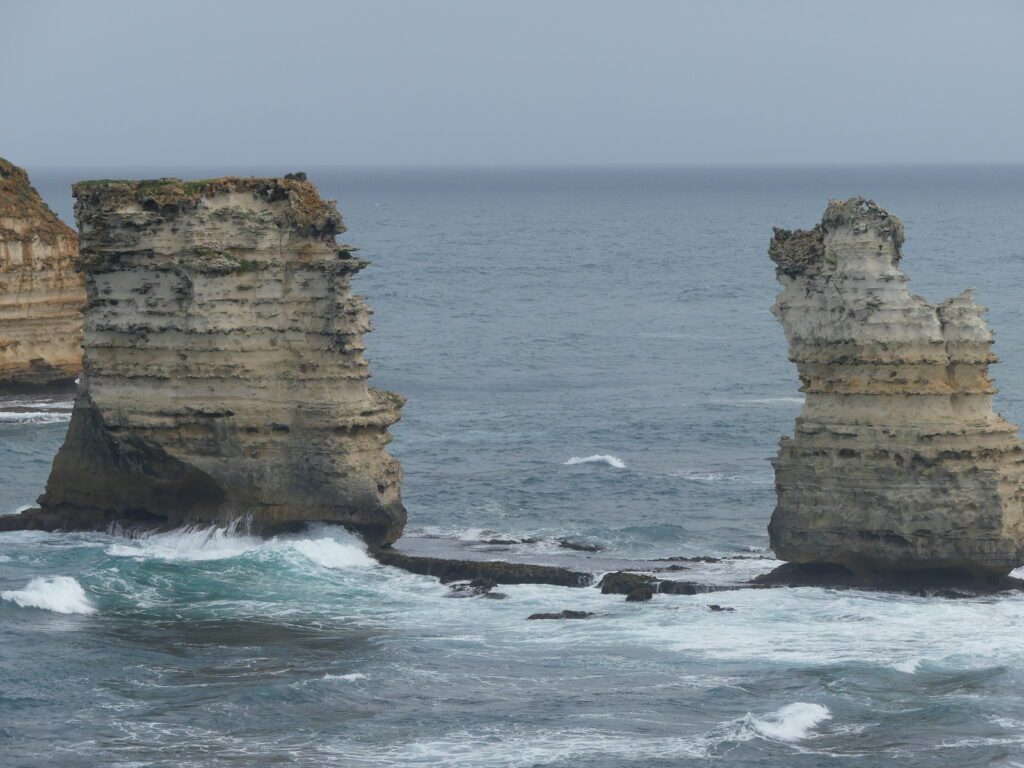
Wind and storms
Australia’s diverse landscapes are known for their beauty, but they can also be subject to unpredictable weather patterns. When storms roll in, they bring heavy rain, lightning, and strong winds that can make camping challenging. Setting up tents becomes a battle against gusts, and keeping gear dry becomes a top priority. Moreover, sudden downpours can flood camping areas and turn dirt roads into muddy obstacles.
It’s essential to have sturdy, waterproof equipment and to choose campsites with good drainage. Additionally, strong winds can pose a safety risk, especially in coastal areas. Securely anchoring tents and taking shelter in sturdy structures or vehicles is crucial during windy conditions.
While storms and wind can add an element of adventure, it’s important to stay vigilant, stay informed about weather forecasts, and be prepared to adapt your plans accordingly. By doing so, you can navigate through Australia’s ever-changing weather and still enjoy an incredible camping experience.
Best season for camping in Australia
Australia’s diverse climate means that the timing of your camping trip can make or break your holiday. The best time for camping will depend a lot on where you’re headed. Generally said, the best season to go camping is during the mild autumn months between March and May. With the summer tourists gone, you can enjoy the peacefulness and beauty of nature without the crowds
You’ll find the temperature is comfortable during the day, around the mid-20s Celsius, and chilly but enjoyable at night. Summer is of course prime time for camping in Australia and a great choice if you don’t mind booking your campsites ahead of time. During winter, you might still get some nice weather up north but the southern parts of the country will be mostly chilly, which campers need to be prepared for.
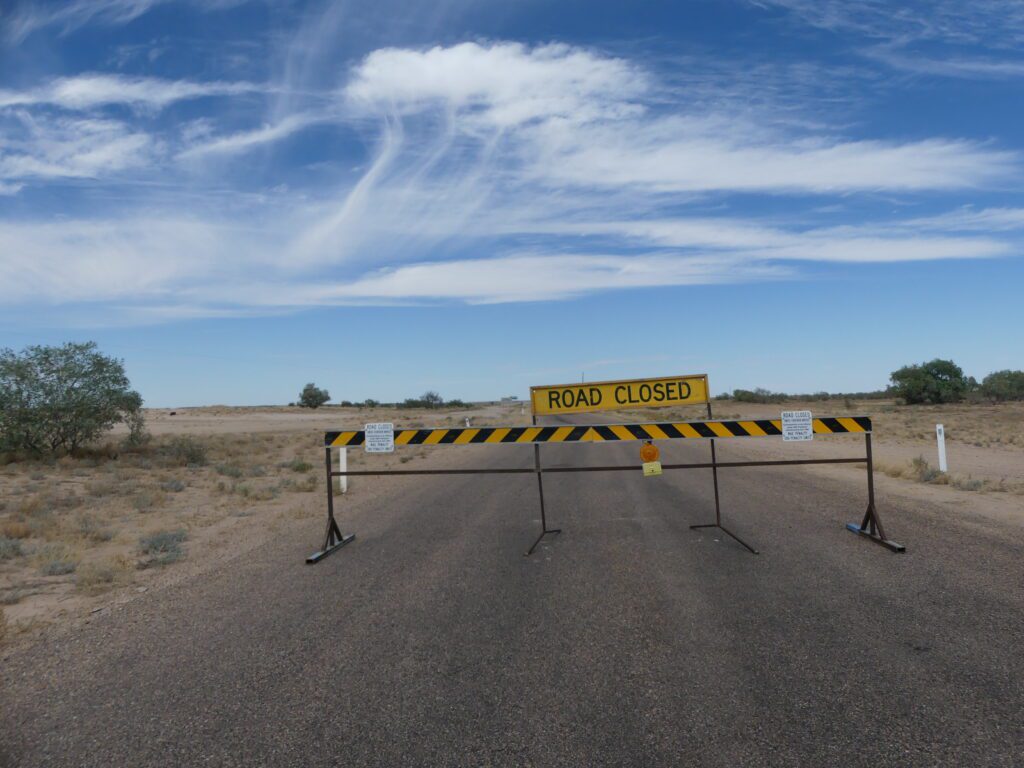
How cold is too cold for camping?
Camping can be an incredible experience, bringing you closer to nature and allowing you to disconnect from the hustle and bustle of everyday life. However, when the temperature drops, it can be difficult to stay comfortable and warm in your tent.
The question is, how cold is just too cold for camping? Well, that largely depends on your level of experience and the gear you have at hand. Generally speaking, most campers prefer to avoid temperatures below freezing, as they pose a risk of hypothermia and frostbite. However, with the right preparation and gear, some adventurous souls brave even colder temperatures and come out on the other side with a newfound appreciation for the natural world.
Luckily, temperatures in Australia rarely go very far below freezing and if they do, it’s mostly in mountainous areas during winter where you will probably not be camping. You’ll be find with reliable gear and a high-quality tent.
Clothes for cold weather camping
When it comes to cold weather camping, the right clothing can be the difference between a miserable experience and a comfortable one. It’s important to invest in high-quality gear that can keep you warm and dry in even the most extreme conditions.
Layers are key – start with a moisture-wicking base layer to keep sweat away from your skin, add insulating layers of fleece or down, and top it off with a waterproof shell to protect you from wind and snow. Don’t forget about your feet and hands – warm socks and gloves are a must-have. With the right clothes, you can enjoy all that nature has to offer even in the coldest of temperatures.
How hot is too hot for camping?
When it comes to camping, temperatures can play a significant role in how enjoyable your experience is. While some people enjoy basking in the warmth of the sun during the day, it can quickly become unbearable if the temperature climbs too high. Heat exhaustion and dehydration are real dangers when the weather is too hot.
So what exactly is too hot for camping? The answer varies based on several factors such as humidity levels, sun exposure, and your personal tolerance for heat. Generally, experts recommend staying indoors when the temperature reaches 40°C or higher. If you do decide to go camping during hot weather, be sure to take precautions such as staying hydrated, seeking shade, and wearing lightweight, breathable clothing.
The Australian outback is a harsh and unforgiving landscape and during summer the heat can be extreme. Always bring at least double the amount of water you normally need and account for your car possibly breaking down as resuce can take a while on remote roads.
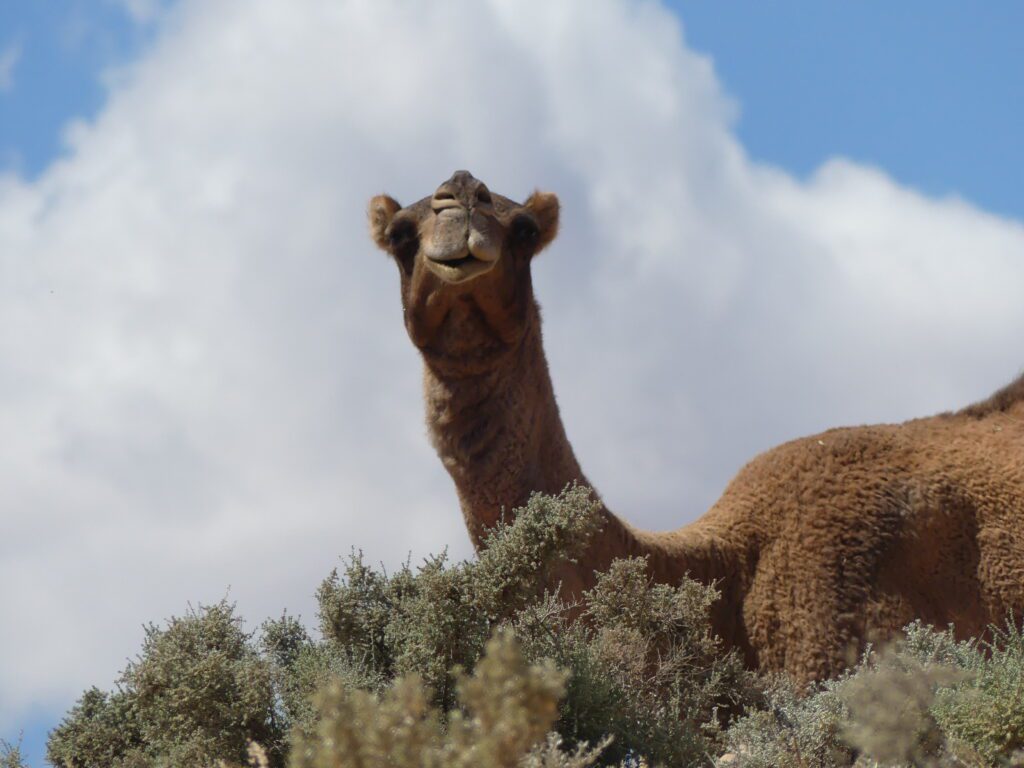
Before you go…
Weather can have a big effect on the perfect camping trip but there are a lot more things you should watch out for when it comes to exploring Australia. Our complete guide to wild camping and advice on how to get tent pegs into hard ground are a good place to start. You’ll also love our guides to beach towns like Coral Bay, Byron Bay, and Perlubie Beach and this post about the best caravan parks in South Australia.

